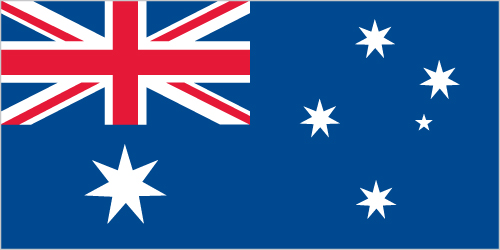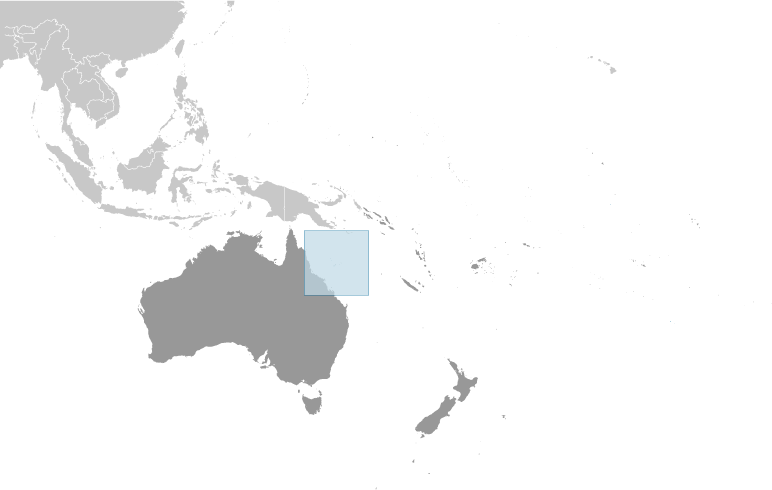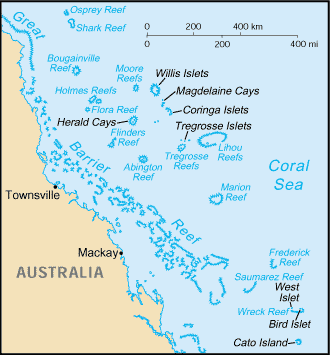Page last updated on October 25, 2013
Scattered over more than three-quarters of a million square kilometers of ocean, the Coral Sea Islands were declared a territory of Australia in 1969. They are uninhabited except for a small meteorological staff on the Willis Islets. Automated weather stations, beacons, and a lighthouse occupy many other islands and reefs. The Coral Sea Islands Act 1969 was amended in 1997 to extend the boundaries of the Coral Sea Islands Territory around Elizabeth and Middleton Reefs.
Oceania, islands in the Coral Sea, northeast of Australia
18 00 S, 152 00 E
total: less than 3 sq km
country comparison to the world: 249
land:
less than 3 sq km
water:
0 sq km
note:
includes numerous small islands and reefs scattered over a sea area of about 780,000 sq km with the Willis Islets the most important
NA
0 km
3,095 km
territorial sea: 3 nm
exclusive fishing zone:
200 nm
tropical
sand and coral reefs and islands (or cays)
lowest point: Pacific Ocean 0 m
highest point:
unnamed location on Cato Island 6 m
NEGL
arable land: 0%
permanent crops:
0%
other:
100% (mostly grass or scrub cover) (2011)
0 sq km (2011)
occasional tropical cyclones
no permanent freshwater resources
important nesting area for birds and turtles
no indigenous inhabitants
note:
there is a staff of three to four at the meteorological station on Willis Island (July 2007 est.)
conventional long form: Coral Sea Islands Territory
conventional short form:
Coral Sea Islands
territory of Australia; administered from Canberra by the Department of Regional Australia, Local Government, Arts and Sport
the common law legal system of Australia, where applicable, applies
none (territory of Australia)
none (territory of Australia)
the flag of Australia is used
no economic activity
automatic weather stations on many of the isles and reefs relay data to the mainland
none; offshore anchorage only
defense is the responsibility of Australia
none
 Central Intelligence Agency
Central Intelligence Agency





